Willie Greer
- September 23, 2021
A classroom projector needs to fit certain criteria, or you could end up with a unit that cannot project in a room with ambient lighting and has poor quality sound. Rest assured because our media team has created a list of the best projectors to use in a classroom that will meet all of your expectations and more.
Ultra LS300
- UST projector
- Supports 4K content
- 2.1 Yamaha speakers
- 3-chip projector
Ture 6000
- 200-inch screen size
- Comes with a remote
- Small and compact
- Built-in 5W speaker
Mini Projector
- Budget price
- Built-in speakers
- Low noise
- Extended lamp longevity
Reviews of the Top Projectors for Classroom Use
AZEUS Ture 6000
The first of our classroom projectors is the AZEUS Ture 6000. This specific projector was chosen for its size. It’s a portable projector that works well in small classrooms or even large ones because its projected screen size can reach 200 inches.
The Ture 600 utilizes an LED light source and LCD display technology, which combined together gives you a lamp lifespan of 50,000 hours!
There is also a speaker built into the Ture 6000, so you won’t need to connect an extra one to this classroom projector. The 5W speaker is considered Hi-Fi and the heat dispersion technology will make sure the audio is always clear.
Pros
- Large 200-inch screen size
- Supports full HD 1080p
- Education projector with Hi-Fi sound
- Portable design
- Doesn’t require external speakers
- Low noise
- Heat dispersion fan
- Comes with a remote
- Long lamp life
- Keystone correction
- Zoom function
Cons
- The cords will stick out a bit when plugged in
- Remote does not include batteries
Epson EpiqVision Ultra LS300
While a mini projector can be an excellent school projector choice and do the basics, there is no debate that spending more will get you more in terms of all the bells and whistles. The Epson EpiqVision Ultra LS300 comes in both black and white, and it is a very high-quality projector if our experts do say so themselves.
With the LS300 you get 4K content support, and a 2.1 speaker system from Yamaha directly installed. It’s an ultra short throw projector with a very high contrast ratio, laser array technology, and 3LCD display technology.
Other features include Chromecast built in and Android TV.
Pros
- Displays up to 4K content
- True 3-chip design
- Chromecast built in
- Android TV
- Yamaha speakers
- UST projector
- Comes in black and white
- Contrast ratio of 1,500,000:1
- 120-inch projected image
- 3600 lumens image brightness
Cons
- More expensive
- Manual focus and adjustment
AuKing Mini Projector
As said, even affordable classroom projectors can do the job – if you know what to look for. The Auking Mini Projector supports 1080p Full HD and is about 35% brighter than other projectors, which makes it a great choice even with a bit of ambient light in the classroom.
There are 2 speakers built-in and the compact classroom projector can deliver an image size of 170 inches. A mini projector is great for classroom use and home entertainment. Since it’s a very portable model, the AuKing model can be used for both.
Th small projector comes with a 55,000-hour lamp longevity and a 2-year warranty.
Pros
- Low noise advanced fan cooling
- Very long lamp life
- Large screen size of 170 inches
- Has a USB port
- 2-year warranty
- Supports 1080p Full HD
- 2 built-in speakers
- Budget price
- Portable
Cons
- HDMI cable not included
- Not the best with lighting
DBPOWER Bluetooth Projector
If we move a bit higher on the price scale, our media team came across the DBPOWER Bluetooth Projector, which is also another portable and convenient projector for the classroom. The additional cost is worth it since you can enjoy native full high definition content with a lumens rating of 8000.
There is Bluetooth but Wi-Fi as well, which is specially designed to work well with your phone. You can bring an HD experience to the classroom by streaming content from a mobile device.
Extra bonus features include a carrying case, speakers built in with SRS, a 3-year warranty, and lifetime support.
Pros
- Native 1080p
- 8000 lumens solid brightness
- Hi-Fi stereo sound
- Reduced noise from the cooling fan
- 3-year warranty
- Lifetime support
- A free carrying case included
- Zoom function
- Mirror display function
- Small and compact
- Works with TV stick
Cons
- Mirroring won’t play copyrighted videos
- Short power cord
HOMPOW 5500L Movie Projector
For those looking for classroom projectors that can connect to a phone with a wired connection, then look no further than the HOMPOW 5500 movie projector. The best projectors for classroom purposes will not only have speakers built in and the ability to hook up to external speakers, but also your phone.
The best classroom projectors will add to the convenience level rather than take away from it. The 5500L is more portable than most projectors and has noise reduction technology that will make sure the fan noise doesn’t drown out the audio.
The 5500L has a very long lamp longevity, has 80% higher image brightness, and supports 1080p.
Pros
- Supports full HD
- Brighter projector than most
- Hooks up to a phone via cable
- Keystone and focus adjustments
- Portable
- Noise reduction technology for the cooling fan
- Large projection screen
- Comes with a remote control
- Built-in speaker
- Great for classroom presentations as well
Cons
- May sound better with a separate speaker
- Not the best for very well-lit rooms
ViewSonic PX701HD
ViewSonic is a renowned brand in terms of imaging, and the PX701HD reminds us why. The image brightness from the unit is at a very impressive 3500 Ansi lumens, and the 300-inch screen size is amazing for such a small device.
The HD projector can deliver 1080p resolution vivid images into your classroom which will bring PowerPoint presentations to life in new and exciting ways.
The SuperColor Technology, reduced input latency, and enhanced versatility of the unit makes it a good choice for classroom content. The ViewSonic PX701HD unit integrates easily with Chromecast, Fire TV stick, and Roku systems.
Pros
- 1080p resolution
- SuperColor Technology
- Reduced input latency
- Works with many systems
- Portable
- Long lamp lifespan
- Large screen size up to 300 inches
- 3500 Ansi lumens
- Vertical lens shift
- Optical zoom
- Auto vertical keystone
- Short throw
- Remote control included
Cons
- Not a backlit remote
- No horizontal keystone
Optoma W400LVe
If you want a professional effect without spending the big bucks for the Epson LS300, then the Optoma W400LVe WXGA projector is a great alternative. Our experts classified these as one of the best classroom projectors for its image quality, white brightness, and connectivity options that include HDMI, VGA, and more.
The 4000 lumens rating and good contrast ratio make this specific projector makes the HD content even clearer in rooms with subtle lighting. The setup is very easy and the device is very intuitive with vertical keystone correction and zoom functions.
The small and portable projector is under 7 pounds and that includes the integrated speaker.
Pros
- HDMI input, VGA connections
- 4000 lumens of brightness
- Vertical keystone
- Zoom
- Very portable and small
- Integrated speaker
- WXGA images
- Brilliant Color Technology
- Energy-efficient eco-mode
- Lightweight
- Great projector for classrooms and offices
Cons
- Not a shorter throw model
- No horizontal keystone
ViewSonic PG703X
Another Viewsonic projector to make our best classroom projectors list is the PG703X. This one is an XGA resolution projector, but Viewsonic also makes WUXGA resolution models as well. The small and versatile projector is ideal in class settings and can deliver a massive screen size of 300 inches at 4000 lumens.
The ViewSonic PG703X is a plug-and-play design and it also features Super Eco-Mode, which prolongs the life of the lamp even more. The projector works with most media devices since it possesses HDMI, VGA input options. All the cables are included with your purchase and there is even a remote control to make setup faster.
Pros
- Eco-friendly mode
- HDMI, VGA connections
- Larger screen size than most classroom projectors
- 3-year warranty
- 4000 lumens
- Cables come with your purchase
- Super Color Technology
- Low input latency
- Portable
Cons
- Not a lot of height adjustment
- Long throw
Projectors for Classrooms Buyer’s Guide
The best classroom projectors that make our list need to check off certain items. Our media team with the help of our audio team has created a quick buyer’s guide that will make sorting through poor quality products much easier.
Size and Weight
Our audiovisual teams say a simple way to sum up this section is to ask yourself if you want or need a portable school projector. The size and weight of the unit will really only affect the setup and the portability.
In general, expensive projectors are usually larger, since they house more and higher quality features, so they won’t be the most mobile. If you want a home projector that can also be used in a classroom, then your best bet is to go for one that is small.
We have included a few that even come with their own carrying cases and weigh less than 7 pounds.
As we said, the weight also affects the setup. A very heavy and large model will not be ideal to mount, but small ones can even come with their own tripod for better height adjustment and they are also easier to prop up.
Resolution
The next item on the list is the resolution. It can be hard to find projectors that are on the lower end of the price scale that can give anything beyond a full HD resolution. Depending on how large the room or lecture hall setting is, it could be worth the additional cost to get a more expensive unit that can hit 4K.
The resolution of projectors today is an indicator of the detail you can make out on the screen. No one likes fuzzy and blurry images where you can barely make out the text. When you’re teaching a classroom full of people, you want them to be able to see the projected images clearly no matter where they are sitting.
For this reason, our experts suggest a screen size of 100 inches at the very least and a resolution of 1080p. If you can find larger and higher quality resolution, then by all means that’s the unit to go for.
Contrast Ratio
The best projectors for classroom use will definitely have a high contrast ratio. What is the contrast ratio? It’s the contrast between the blackest black and the whitest white on an image. You will see the contrast ratio listed as something like 6000:1. The figure before the colon pertains to the brightness. So a contrast ratio of 6000:1 means the brightest part of an image will be 6000x brighter than the darkest.
A higher contrast ratio will deliver clearer and sharper images, so ideally, the higher the first number is the better. As you can imagine, a better contrast ratio will come at an additional cost, but it’s worth it when you use your unit in a large classroom.
You don’t need to always get the best, the LS300 for example has an incredible contrast ratio of 1,500,000:1! Our experts say a unit with 6000:1 and above will suffice.
Brightness
The brightness offered by a projector is how bright the entire projected image will be, regardless of color. This criterion is measured in lumens [1], and a higher number means the brighter the image. How bright do you need the images to be? That depends on your environment.
The best projectors for classroom purposes could be so bright that it produces clear images on even whiteboards! However, you may not need brightness to that level if you have a very dark environment. Our media team says users will generally need a brighter projector if there is more ambient lighting in the room.
To put it into perspective, our visual experts say 2500 lumens should be enough in the best classroom projector.
Display Technology
The next important consideration for classroom projectors is display technology. This section also refers to the light source. There are three main visual techs – LCD, LED, and DLP.
As the name suggests, LCD projectors utilize a liquid display technology where the light produced is reflected from dichroic mirrors onto the LCD panel which is then transferred onto the projection screen.
LED projectors use LED light sources to create images, which is much more efficient. LED projectors are also the ones with the smallest footprint. If you want the lamp to last longer, look for LED units.
DLP projectors use digital light processing, which uses a spinning color wheel along with tiny mirrors. You can imagine the intricacy that goes into DLP projectors.
Connectivity Options
Depending on what media sources you want to use, the best projector for schools should have many connection options, with the most important one being a connection to smartphones.
Our experts suggest looking for units that have HDMI, USB, and mini USB and VGA connections. HDMI, USB, and VGA are very common and support a wide variety of devices that will allow you to stream content via multiple devices such as a laptop, TV box, and more.
Interactive projectors will also have wireless connection options such as Bluetooth and Wi-Fi so you don’t need a cable to get started. Wireless connections are great to have onboard portable devices. You will not need messy cables and it increases setup options.
Throw Distance
Speaking of the setup options, the throw distance of a projector is so important. The throw distance is the space the projector needs between it and the wall or screen in order to produce a clear image.
There are 4 types of classifications for throw distance – UST (ultra short throw), short throw, standard, and long throw.
UST projectors could need as little as just a few inches to produce a large image. These types are great to keep out of the way so there won’t be a permanent fixture in the middle of your class.
Shorter throw projectors need 5 feet or less, standard projectors need around 8 feet, and long throw options need more than that. Our media engineers say the throw range depends entirely on your setup and preference, but keep in mind that shorter throw models are preferred, which is also why they are typically more expensive.
Ease of Use and Setup
In a class setting, it’s vital to be able to get a projector up and running in no time at all. Kids can get a little antsy if you’re spending a good 30 min hooking up the projector. Our team says a unit with Wi-Fi or Bluetooth will be infinitely easier to connect and it won’t limit your placement options.
If you go for a cabled design, our media team says to find ones that are plug and play.
Audio
The best projector to use in a classroom will definitely have in-built speakers. Again, this section is personal preference, but our team felt that testing ones with built-in audio systems really eliminated the extra hassle of finding a compatible speaker to connect.
There is always a chance that the integrated speakers will not be loud enough, so our team also suggests making sure there are outputs that can incorporate speakers.
Noise
The noise a projector emits, similar to a laptop, is due to inefficient cooling which emphasizes the fan noise. Our professional media engineers say if you can find a unit with an advanced cooling system, the noise should not be an issue.
Advantages of Using a Projector in a Classroom
Do you need a projector in your classroom? There are certain benefits such as reducing chalk dust that could be triggering for some with allergies and asthma. Also, since projectors are known for big screen sizes, it’s also clearer for students in any position to take notes – if you find a good projector that is.
A projector allows you to show videos and maybe even hook up to a gaming console if it helps your teaching purposes to create a more interactive and fun learning experience for your students. Presentations will also be enhanced with brighter colors and higher resolution.
Ways to Use a Projector for Educational Purposes
A projector in the class could be used for an interactive activity such as gameplay. Being able to immerse students in the learning experience could help them with information retention.
As we said, projects and presentations will be upgraded with better visuals and field trips are even possible since museums and educational facilities have integrated virtual tours nowadays.
FAQ
How many lumens should a classroom projector have?
A classroom projector should have at least 2500 lumens. This is a good standard for classrooms that won’t be subjected to strong ambient lights. The brighter your class environment is, the brighter your unit should be. Conversely, a very dark environment will not require a unit to be exceptionally bright.
Our Top Pick For a Projector for Classrooms:
AZEUS Ture 6000
The best projector for classroom settings is the AZEUS Ture 6000. It’s a portable unit that does not sacrifice features for the size. It’s a phenomenal projector with 6000 lumens, a very big screen, and flexible connection options. The advanced LCD technology and hi-fi speakers make it a miniature entertainment system.
The post What is the Best Projector for Classroom Use? (2021) appeared first on The Product Analyst.
from The Product Analyst https://theproductanalyst.com/best-projector-for-classroom/
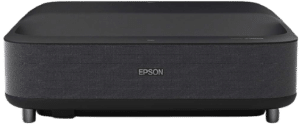
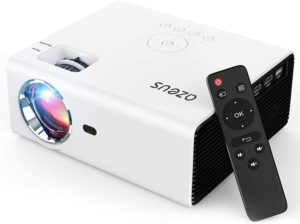
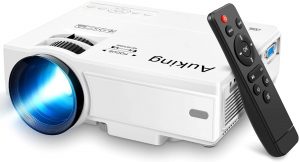

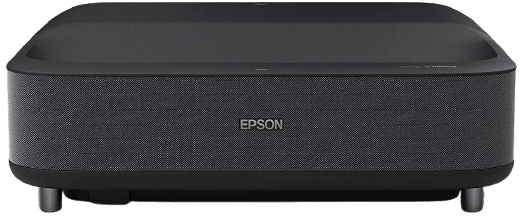


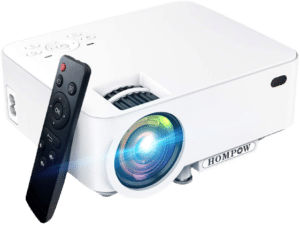








No comments:
Post a Comment